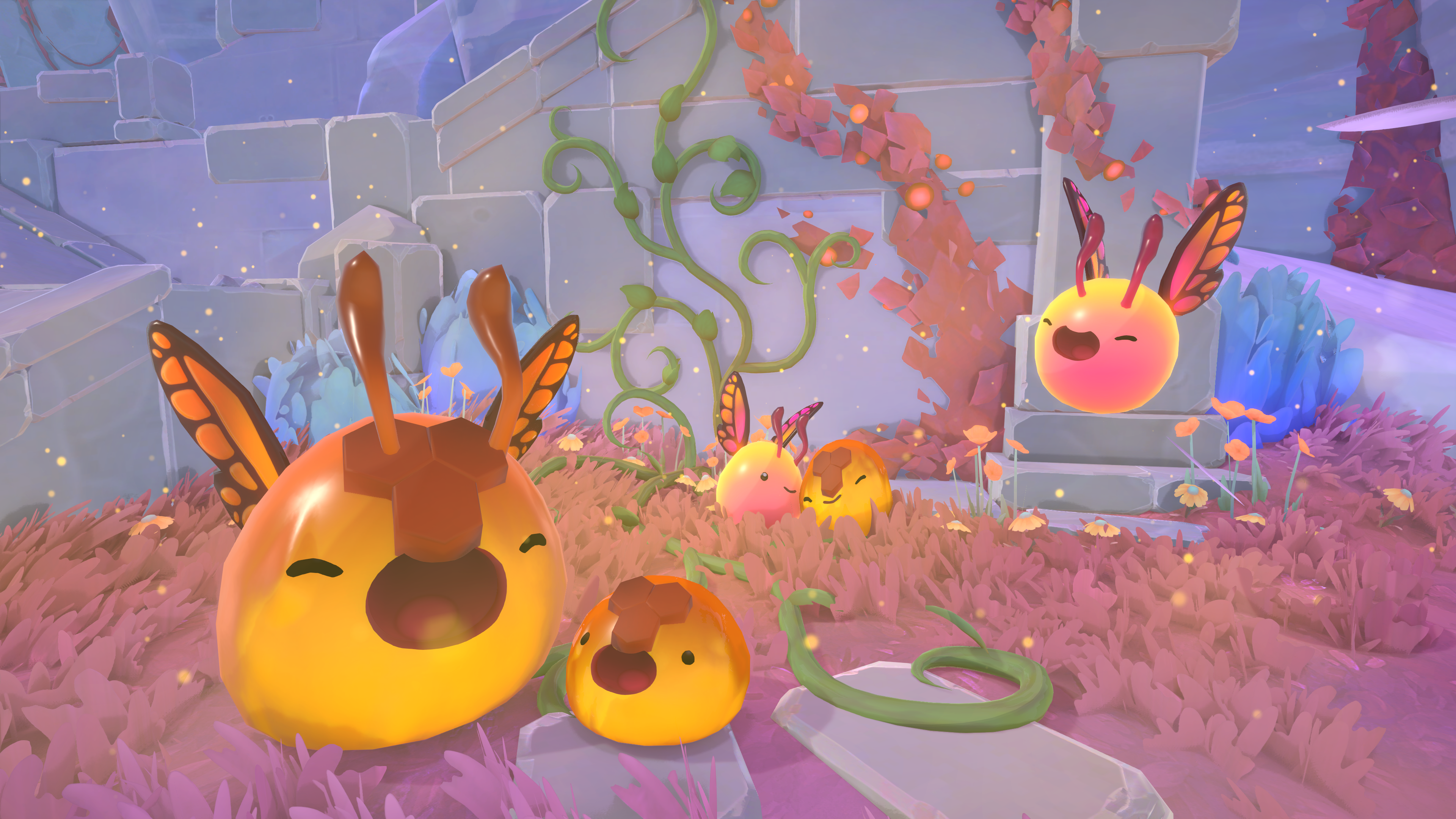Crafting a Unique Weather System for Slime Rancher 2
Key Highlights :

At the intersection of technical and creative lies the intense work that went into developing the weather system for Slime Rancher 2. From crafting dynamic elements that add depth to the game world to ensuring that the weather fits the game's aesthetic, the process of bringing the weather system to life was a collaborative effort between multiple teams.
The tech art team developed custom tooling in Unity to streamline the set dressing process, enabling them to easily place elements such as puddles and have the tool automatically determine the appropriate folder and zones for them. This automation significantly reduced the manual and tedious aspects of the team’s work. The UI was straightforward, enabling the art team to control weather, puddles, streams, pollen clouds, and vines within Unity.
Another custom editor in Unity was created that enabled the team to activate different weather conditions at once. This feature proved to be beneficial for all departments involved in the project. Designers could assess how elements behave under various weather combinations, ensuring that too many conditions were not overwhelming. Engineers could identify any performance or functionality issues caused by heavy weather effects. Artists could fine-tune the appearance of different weather elements, such as clouds during thunderstorms or rain, to create a harmonious visual experience.
The team settled on six weather types, from serene rain to intense storms, and meticulously tested and iterated to ensure the desired player experience. The challenge was to create an emotional connection that aligned with the game's mood while adhering to the game's art direction.
My role in the project was to take artistic objects, effects and sequences, and make them into tangible elements that seamlessly fit into the game. I'm the architect behind the tools that enable dynamic changes over time, orchestrating how weather patterns interact with one another and developing the systems that allow Dyala to fine-tune and implement weather in a way that feels just right to players.
It was important for us to maintain a high level of fidelity while upholding the game's whimsical style. Challenges like achieving the right balance between transparency and color in water effects and controlling the density of raindrops to prevent visual chaos were essential in ensuring that each visual element contributed to the overall immersive experience.
The development of the weather system for Slime Rancher 2 was a unique and challenging process, requiring the collaboration of multiple teams and the expertise of technical artists to bring the experience to life. The result is a dynamic and immersive weather system that adds depth to the game world without compromising its core aesthetic.
